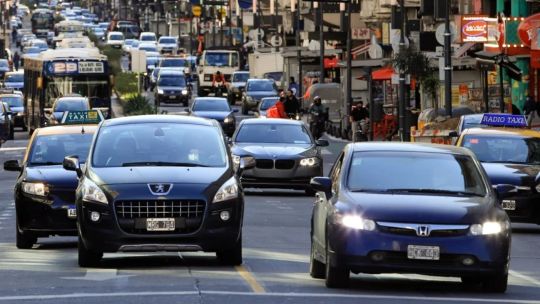
Argentina, like much of the world, is undergoing a process of job redefinition. Transport and delivery platforms like Uber and Rappi, previously linked mainly to the informally employed and those without a university education, are today drawing increasingly diverse profiles. Professionals, technicians, students and pensioners are turning to these apps to complement their incomes or stay active.
A World Bank report warns that the so-called “gig economy” – the economy of sporadic or freelance work with digital platforms – continues consolidating its expansion in developing countries like Argentina.
Over 435 million people worldwide depend on this job model. Between 2016 and 2023, the demand for this kind of work grew 41 percent. The growth is linked, in large measure, to the lack of opportunities on the formal job market with a greater impact on youth and women.
According to the Inter-American Development Bank (IDB, or BID, in its Spanish acronym), a quarter of informal workers today in Argentina are linked to delivery or transport platforms. Just in 2023, according to the latest available data, Uber reported over five million rides in Argentina since its arrival in the country.
Sergio, 59, with five courses left pending in his Business Administration studies and a rating of 4.9 stars with Uber, until recently drew his main income from renting out flats in Buenos Aires City to tourists along with his wife.
“We’ve been handling rents for over 30 years,” he relates, adding: “But tourism has dropped off considerably and the owner of the flats has had to sell six of the 10 they had. I manage those left, if not, we cannot make it.”
According to the estimate from the Focus Market consultancy firm last year, a driver working 30 hours a week can gross an income of approximately 441,000 pesos a month, while those driving 50 hours could top 550,000 pesos. Between 30 percent and 50 percent of that should be deducted for operational expenses such as fuel, maintenance and insurance.
“Instead of lying down watching the screen, I go out and drive,” says Santiago, a 25-year-old waiter. He began working for Cabify a fortnight ago. He and his siblings want to organise a birthday party for their father: ‘’It’s good to be able to splurge without having to take it out of my basic salary.’
Santiago says that he usually earns between 5,000 and 7,000 pesos hourly during the week, while his weekend hourly rate is between 7,000 and 12,000 pesos.
Even so, at an international level, Buenos Aires figures among the cities paying less per kilometre, barely 17 US cents, eight positions below Montevideo and six below Santiago in Chile. The apps operate according to the supply and demand of cars and passengers in a specific zone.
Via digital communities like TikTok, WhatsApp or Facebook groups, veteran drivers warn beginners: “There are dead hours like 10am, when there are no requests. In those cases, it is convenient to go out at times of greater demand, like Friday or Saturday nights or when it’s raining, when you can pick up 16,000 or 18,000 pesos per hour.” The same source gives a reasonable floor as around 9,000 pesos per hour: “If you’re earning less, you’re doing something wrong.”
According to a 2021 study, only 11 percent of Uber drivers in Argentina are women. In many cases, safety is a decisive factor. Mariana, who has been working with the app for over a year, assures that the rating system permits her to filter whom to accept: “Before confirming a ride, I am guided by the age of the passenger and his points.”
Once the request has been made and the ride accepted, both sides can see the points of the other. To give an idea of the system, around 13 one-star ratings (out of 500 evaluations) are needed to lower a driver’s rating from 5.0 to 4.9.
Despite being eyed askance, some advances with the tech world are increasingly showing their democratising side, at least for those who need an economic lifebelt or an excuse for not feeling lonely. What was previously considered an informal or transitory job today appears as a concrete alternative for sustaining projects or a lifestyle.
With a minimum pension in Argentina of around 305,000 pesos (without counting the bonus) and a middle class under increasing pressure from the rising cost of living, an evident demand has arisen from those seeking an additional income. The platforms have understood how to read that need and occupy that vacuum.
The debate over labour rights and regulation within the gig economy remains open but meanwhile these apps already form part of everyday life.
related news
by Mora Riavitz, Noticias Argentinas





